The Golden Age of Smallmouth Bass
By IGFA Fishing Hall of Famer Al Linder with Steve Quinn
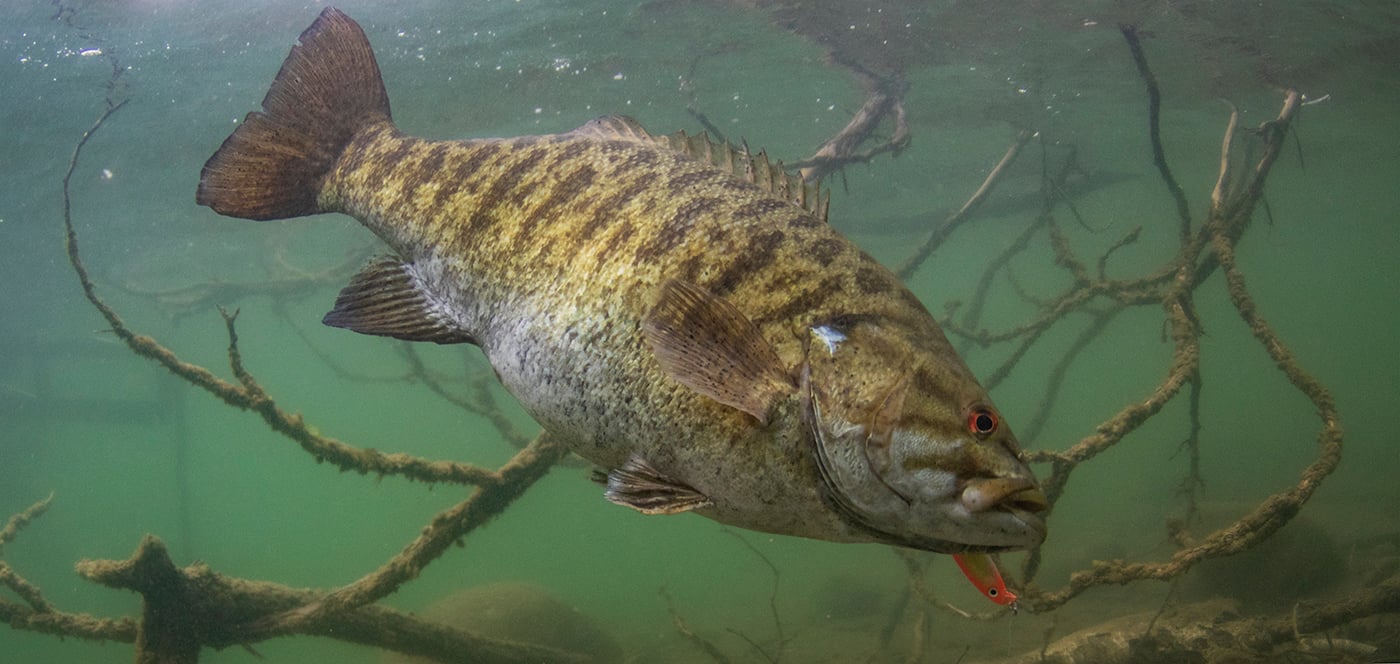
Smallmouth bass go by several terms of endearment, including smallies, small jaws, and bronzebacks. Photo by Adrian Gray.
If you’re already a die-hard smallmouth bass fan, I don’t have to convince you that they’re one of the most exciting species to target in freshwater. For those unfortunate readers not so familiar, I guarantee you’re in for a special treat when you catch your first one. I know because that’s all it took to hook me nearly 70 years ago.
Growing up, our family would travel to Grindstone Lake in Wisconsin every summer to visit my grandparents who had a cabin there, with a lake was full of smallmouth. It was like a dream! Starting at age five, I couldn’t wait to go back each summer and catch some more. The amazing thing is that I’m just as eager to get out and catch smallmouth bass today as I was then. They’ve always been my favorite fish and I can’t get enough of them. They may go by several terms of endearment, including smallies, small jaws, and bronzebacks, but the one thing you can’t call ‘em is wimpy. They’re tenacious battlers and their pulling power defies their size; often executing leaps a tarpon would be proud of, then sounding into the depths to the tune of a screaming drag.
Fortunately for me and all anglers, there’s no better time to be a smallie fan than right now. Angling interest in catching them continues to rise dramatically, and we see simultaneous growth in the potential size of these fish and the quality of populations across their range. I give them a good bit of credit for recent increases in fishing participation among youth and teenagers. Smallmouths seem genetically predestined to succeed in this modern era of environmental challenges, such as our warming climate and invasions by all sorts of exotic species. While these changes haven’t been kind to many species of fish, smallmouths are thriving, seemingly in response to some of these effects. All in all, I’d say we’ve entered the Golden Age of Smallmouth Bass!
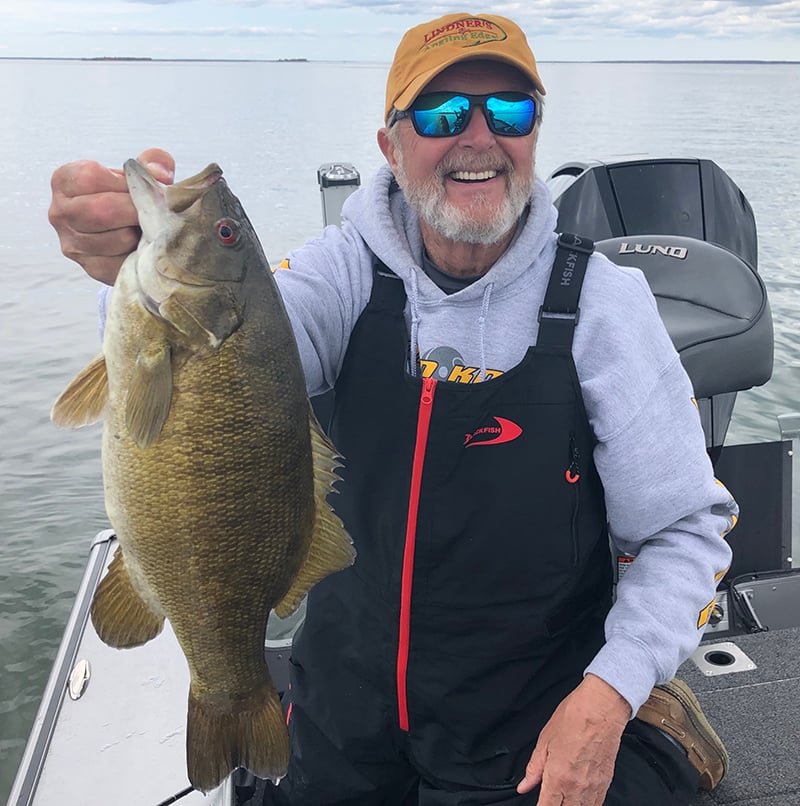
The author and IGFA Fishing Hall of Famer Al Lindner with a nice smallie.
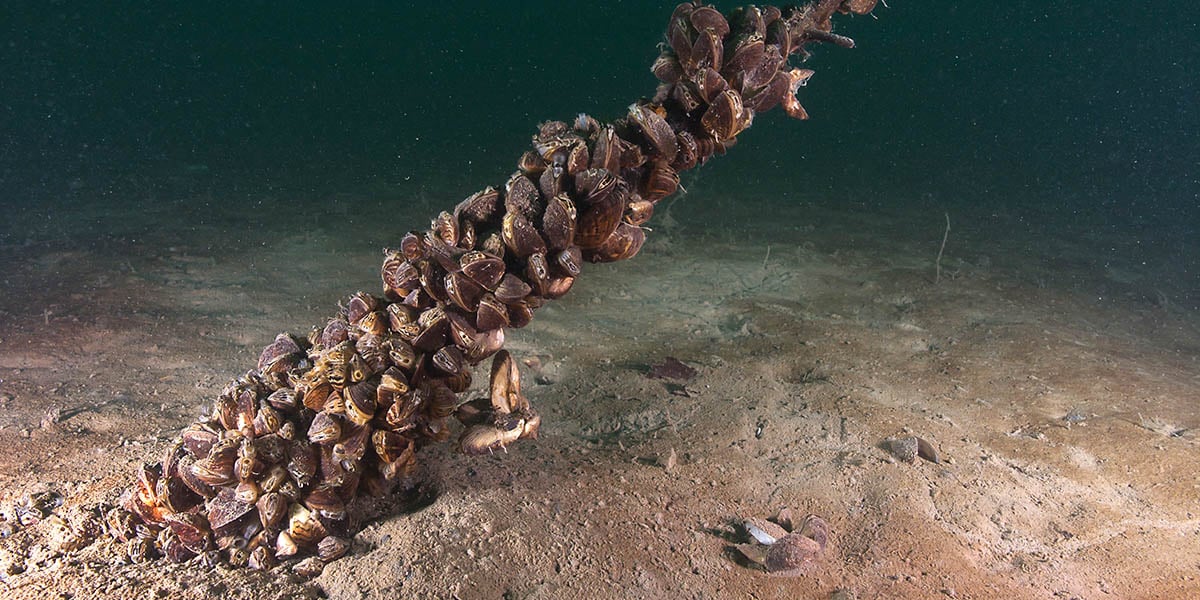
Zebra and quagga mussel populations have expanded to more lakes causing problems with shoreline infrastructure but providing water clarity for smallmouths to thrive.
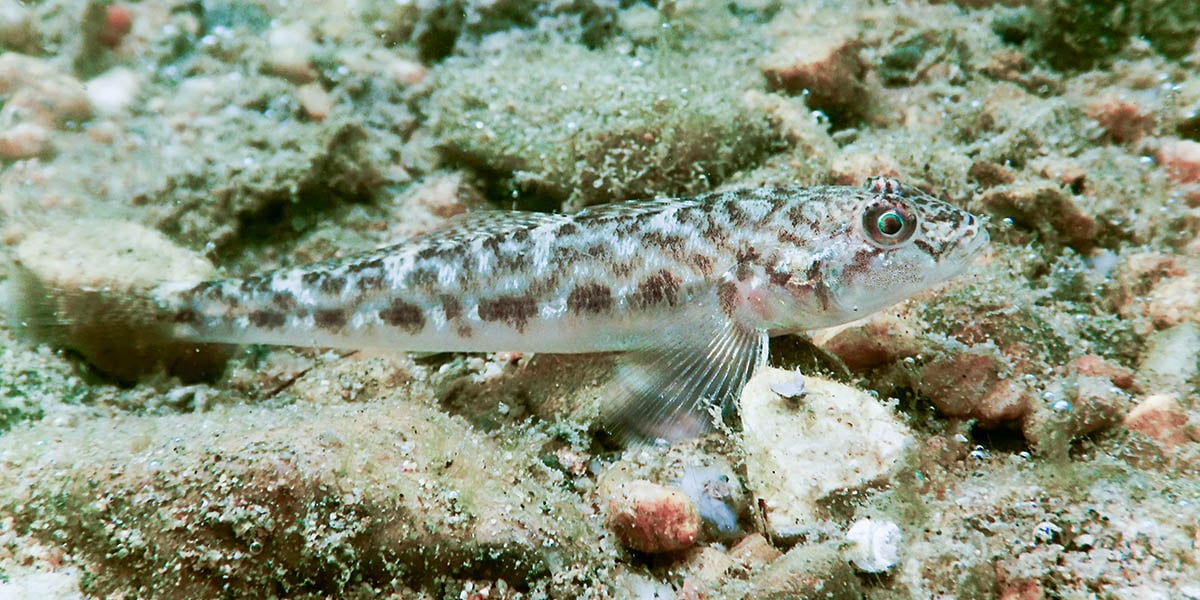
Invasive prey fish, such as the round goby, have also provided added forage for smallmouth bass.
In their northern natural range, annual ice cover has been reduced in recent decades due to milder and shorter winters, which gives this warm water fish more time to spawn and grow. So we now find big fish in lakes that had been too cold to produce them years ago. As a skillful sight-predator, smallmouth bass thrive in clear water. So, their tide began to turn after the Clean Water Act limited pollution of the Great Lakes and other waters, while clearing it as well. Further water clarification has been provided by exotic zebra and quagga mussels that crossed the Atlantic from Europe and colonized the Great Lake in the 1980s. Their populations have expanded to more lakes ever since, causing problems with shoreline infrastructure but providing water clarity for smallmouths to thrive. Along the way, exotic prey fish, such as the round goby, have helped to fatten bass even more, boosting growth rates substantially in the waters where they’re found. The prolific bottom-dwelling goby represents a juicy bite for bass, lacking sharp fins or defensive spines. In prime waters, fortunate anglers tangle with smallmouths over eight pounds each year, a mind-boggling feat. Years ago, a four-pounder turned heads at local bait shops and often ended up over the fireplace in some cabin. Catch-and-release now rules among nearly all smallmouth bass aficionados, therefore allowing more fish to reach maximum size in a given body of water.
Bass Hotspots
The vast waters of the Great Lakes now offer extraordinary opportunities for smallmouth bass, from Chequamegon Bay, Wisconsin, at the western end of Lake Superior to the St. Lawrence River on the New York-Canada border, where the system finally flows to the Atlantic Ocean, stretching well over 1,200 miles. Along the way, excellent fisheries exist near several of America’s and Canada’s major cities—Milwaukee, Detroit, Chicago, Cleveland, Toronto, Buffalo, and Quebec. Rocky bars and sandy shoals throughout the five lakes and their connected waters offer outstanding fishing not available 40 or 50 years ago.
Further south on the vast Cumberland and Tennessee River systems that wind through Alabama, Tennessee, Kentucky, Mississippi, and Ohio, smallmouth bass fans continue to catch them through the fall and winter season, as the abundant schools of shad provide easier feeding as waters cool. Coldwater specialists catch bass through the winter there in deeper quiet holes and even in dam tailraces during milder conditions.
In small streams from New England through Indiana and Illinois, and on into Missouri and Arkansas, we also find an avid breed of smallmouth anglers, who wade and use light tackle or cast flies for bass that are pound-for-pound the toughest of all due to their constant exercise in fighting current. They feed on larval insects and minnows, not reaching the bulk of their lake-dwelling brethren but providing the beauty and battling nature anglers have come to love.
As if this boom wasn’t enough, the smallmouth bass also has enjoyed a great expansion of its range, sometimes supported by official stockings by fishery management agencies. We now find excellent fishing opportunities across the west from California’s northern lakes and reservoirs to the border of Mexico in Lake Amistad on the Rio Grande. The large impoundments of the Colorado River house large populations of smallmouths as well.

In their northern natural range, annual ice cover has been reduced in recent decades due to milder and shorter winters, which has provided an expansion of their range and gives this warm water fish more time to spawn and grow.
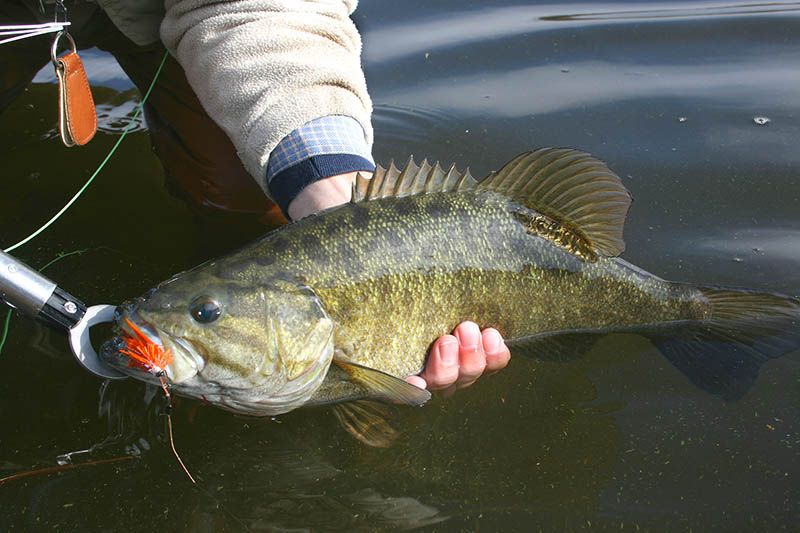
In small streams there is an avid breed of smallmouth anglers, who wade and use light tackle or cast flies for bass that are pound-for-pound the toughest of all due to their constant exercise in fighting current.
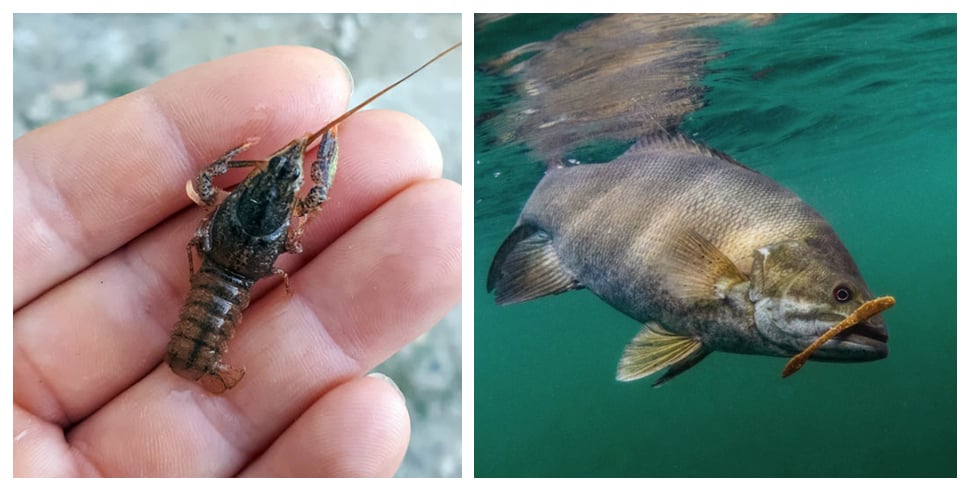
Since smallmouth bass universally favor crayfish as prey many styles of jigs with soft plastics can be deadly, including grubs, tube baits, plastic worms, and boot-tail swimbaits
Catching Smallmouths
One reason for their success in the modern world is their willingness to accept a wide-ranging diet. While goby-gobblers fatten up in northern waters, smallmouth bass universally favor crayfish as prey. They can’t resist these meaty crustaceans despite their formidable claws and defensive tactics. It’s amazing to see a 12-inch smallmouth open its appropriately-sized mouth and cough up a freshly ingested four-inch crawfish. Many species of shiners and minnows also are favored, along with the ubiquitous yellow perch. Once the annual spawn is complete in early summer, bass seek to feed as efficiently and as heavily as they can before the upcoming winter chill sends them into near-hibernation in northern waters.
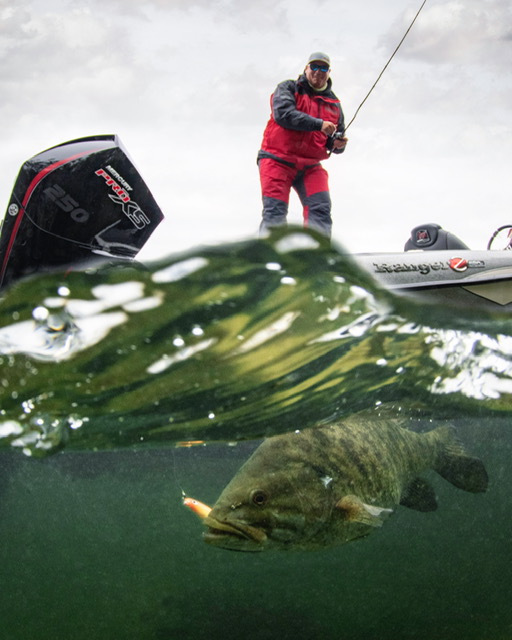
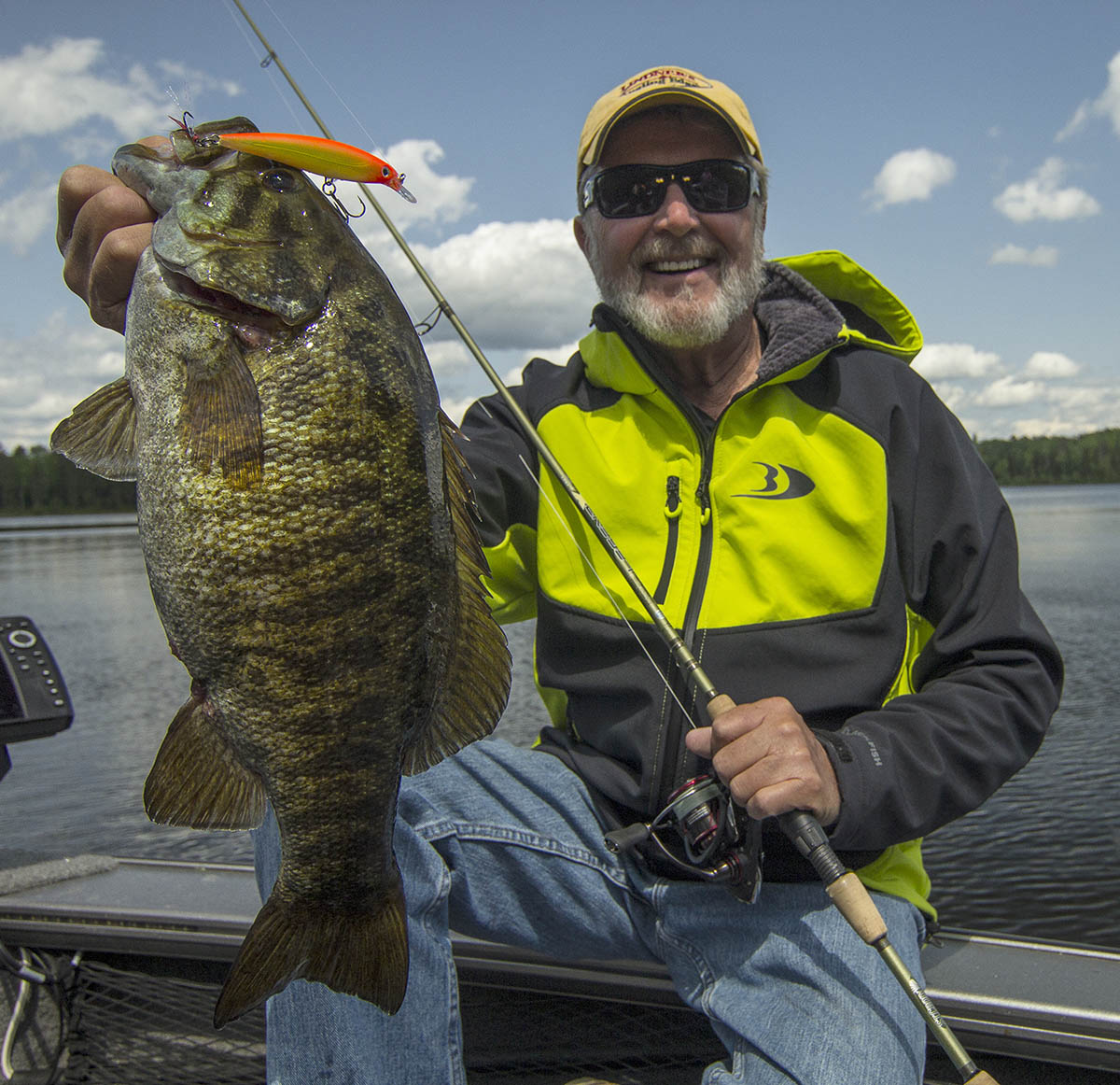
Lindner with a hefty smallie caught with a Rapala X-Rap®.
This open-minded feeding means a variety of artificial lures fill a bass fan’s tackle box. Since smallmouths crave bottom-dwelling creatures, many styles of jigs with soft plastics are universally deadly, including grubs, tube baits, plastic worms, and boot-tail swimbaits. Casting lipped crankbaits shaped like prey fish and crayfish also plays a big role, since they quickly dive to an appropriate depth and bounce erratically across the bottom to draw strikes.
Without a doubt, though, the most exciting tactic, and often the most effective one in warm conditions, is to summon bass to the surface with floating topwater lures that walk, pop, and churn the surface, luring strikes from below. In clear lakes, smallmouths don’t hesitate to shoot from 10 or 12 feet down to blast a surface bait. Then they often dive back down before immediately heading back up for an acrobatic leap or two or three! It’s spectacular action, both addicting and rewarding since topwater lures only come to life in the hands of astute anglers who can manipulate their cadence to tempt fish in various states of aggressiveness. A subtle surface twitch can seal the deal, while other times a fast and erratic action is the key. A pair of anglers can compare tactics and fine-tune their approach for the day or the hour.

Depending on the body of water you are fishing, lipped crankbaits shaped like prey fish and crayfish, quickly dive to an appropriate depths and bounce erratically across the bottom to draw strikes.
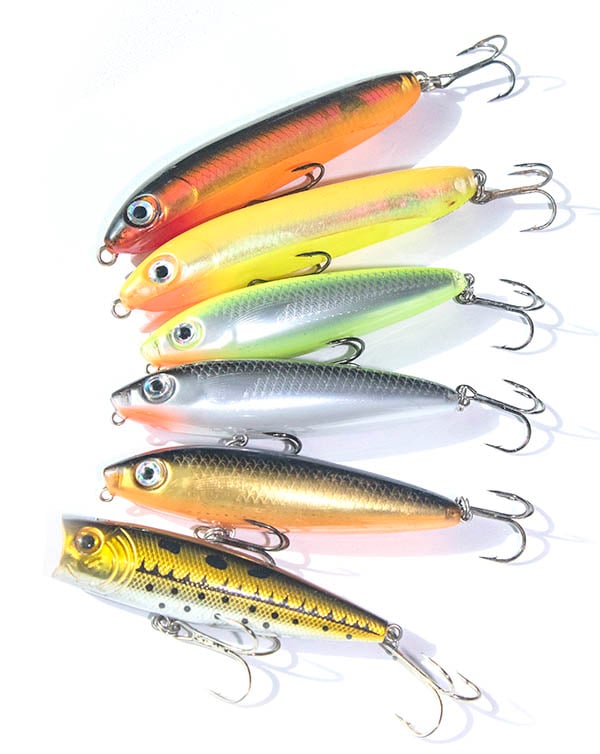
During warm conditions have a good selection of topwaters available in your tacklebox.
As I write this piece in late June here in Minnesota, I can’t wait to get on the water. Within a few miles of our Lindner Media office, we have the Upper Mississippi River, offering excellent bass fishing as it winds southward into Wisconsin and Iowa. I count over a dozen lakes with smallmouth bass within a short drive, including Mille Lacs, a big round lake with an abundant population and some of the biggest smallmouths in the state and a place where they were an unusual catch just 35 years ago. I can take my pick, and count on a great day on the water. The same opportunity is available to millions of anglers across the continent, who all can enjoy this “Golden Age” of the smallmouth bass.
About Al Lindner

IGFA Fishing Hall of Famer Al Lindner is one of America's most notable leaders in the fishing industry. Lindner made the successful transition from competitive angling to television personality. He has been inducted into several fishing hall of fames.
About Steve Quinn
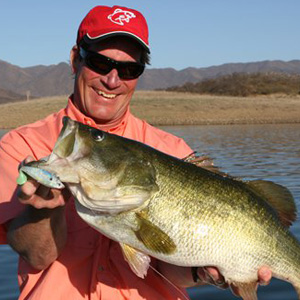
In-Fisherman Field Editor and column writer for Lindner Media, Steve Quinn is a leading expert on black bass fishing, often tapping his fishery science background to connect biology and fishing.
